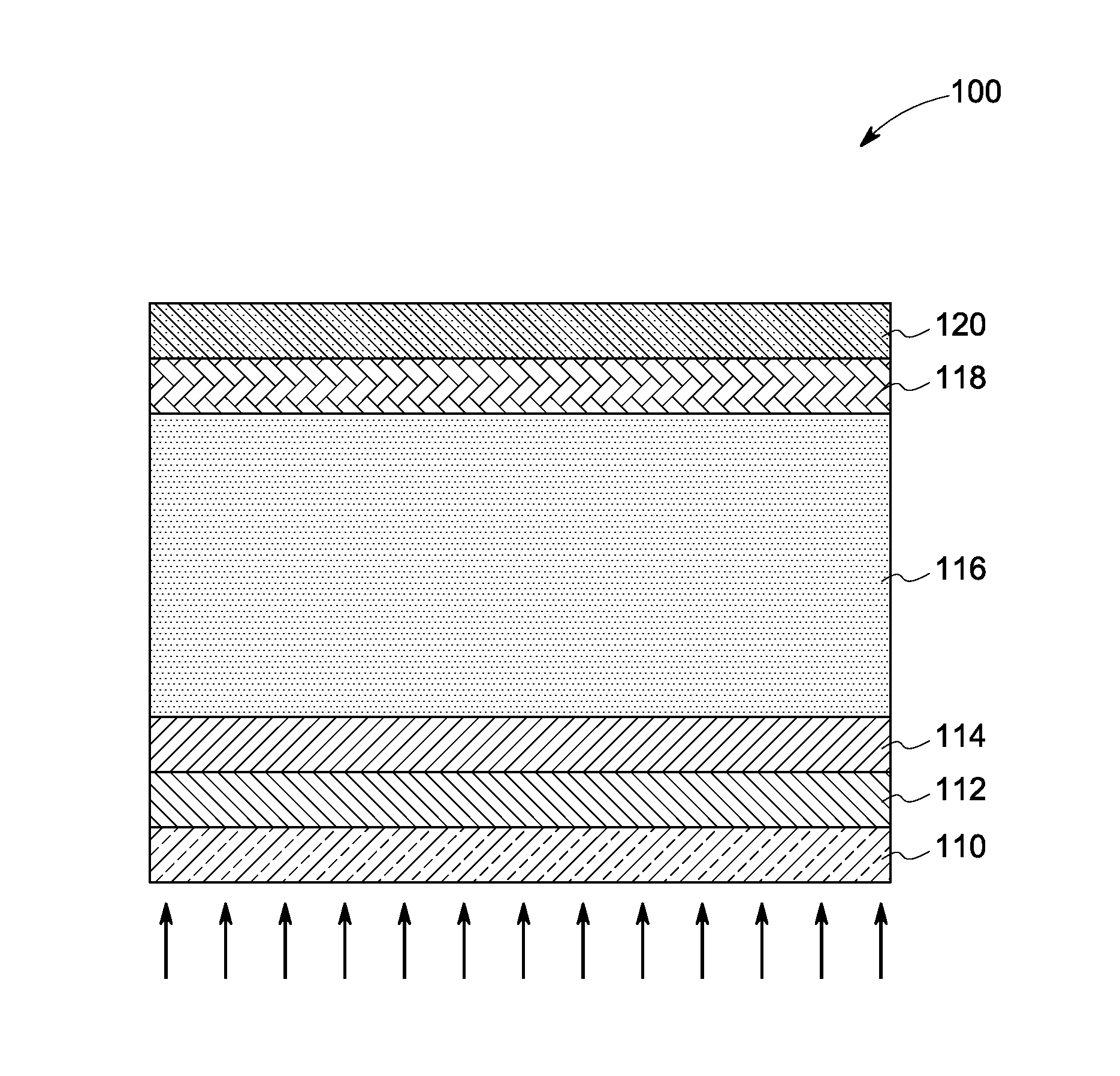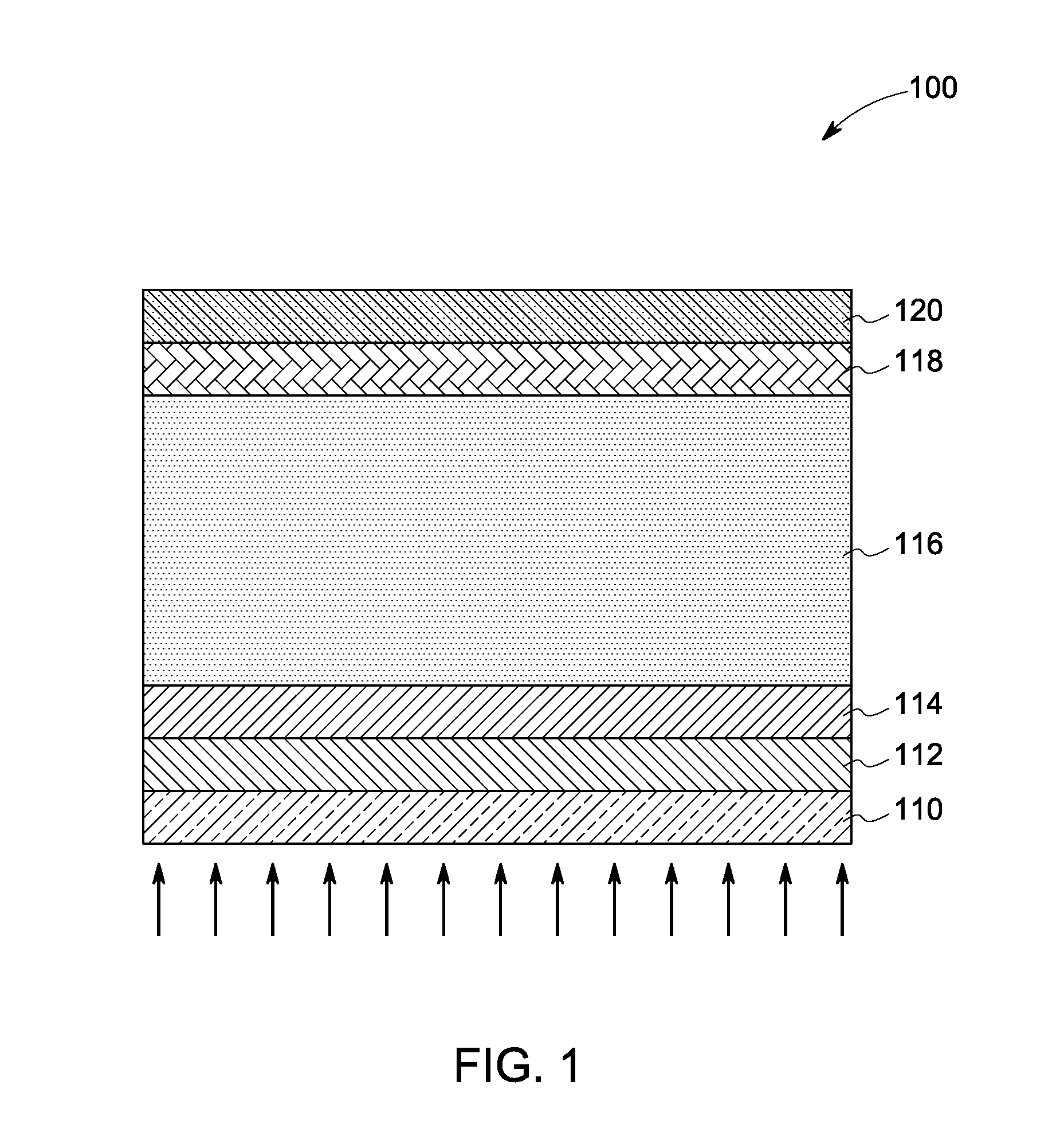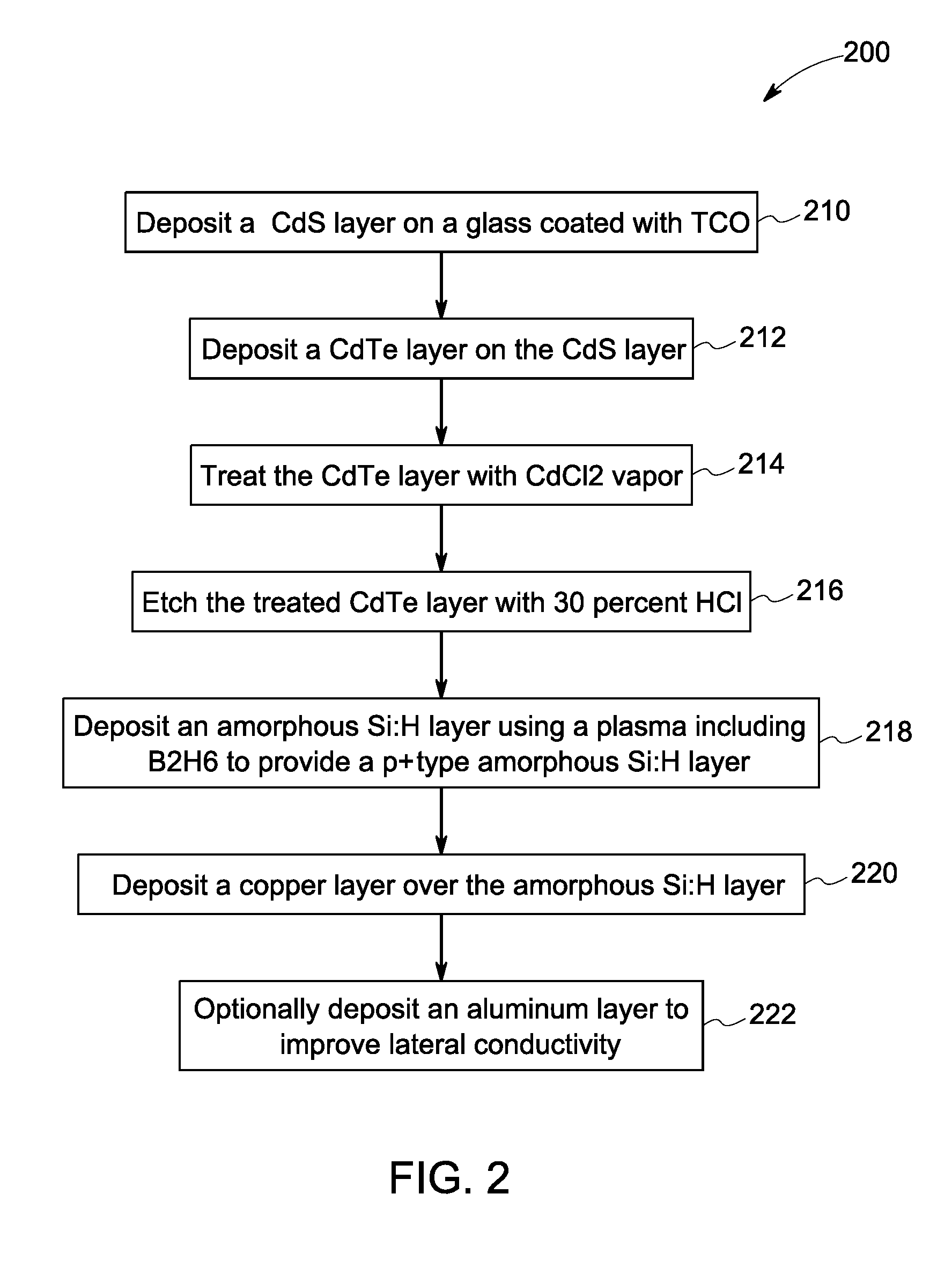Layer for thin film photovoltaics and a solar cell made therefrom
a solar cell and thin film technology, applied in the field of photovoltaics, can solve the problems of low efficiency of solar cell manufacturing, and high cost of conventional solar cells, and achieve the effect of high carrier density
- Summary
- Abstract
- Description
- Claims
- Application Information
AI Technical Summary
Benefits of technology
Problems solved by technology
Method used
Image
Examples
Embodiment Construction
[0014]Cadmium telluride (CdTe) based solar devices known in the art typically demonstrate relatively low power conversion efficiencies, which may be attributed to a relatively low open circuit voltage (Voc) in relation to the band gap of the material. Further issues with improving the cell efficiency of CdTe solar cells include the high work function of CdTe. The high work function of CdTe leaves a narrow choice of metals that can be employed to form an Ohmic contact with the CdTe layer. The metals include platinum and gold, which are not commercially viable metals for low-cost mass-production of the CdTe solar cells. However, though other metals like molybdenum, nickel, chromium, etc. may be employed, they form a barrier; for example, in the case of p-type CdTe, the holes will need to tunnel through the barrier region. As CdTe has typical carrier densities between 1×1014 and 1×1015 per cubic centimeter, this barrier may be relatively large. It has been found that without proper tre...
PUM
 Login to View More
Login to View More Abstract
Description
Claims
Application Information
 Login to View More
Login to View More - R&D
- Intellectual Property
- Life Sciences
- Materials
- Tech Scout
- Unparalleled Data Quality
- Higher Quality Content
- 60% Fewer Hallucinations
Browse by: Latest US Patents, China's latest patents, Technical Efficacy Thesaurus, Application Domain, Technology Topic, Popular Technical Reports.
© 2025 PatSnap. All rights reserved.Legal|Privacy policy|Modern Slavery Act Transparency Statement|Sitemap|About US| Contact US: help@patsnap.com



